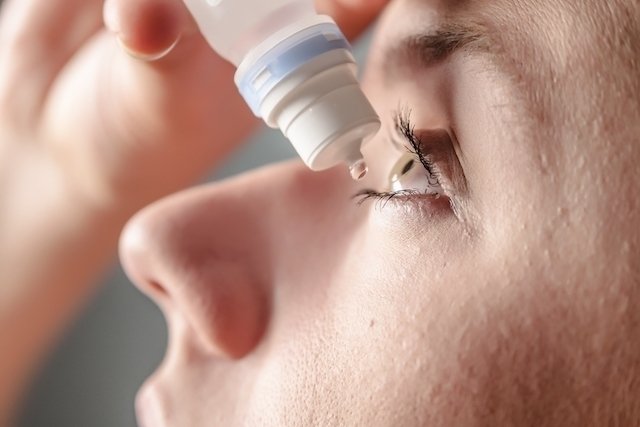Glaucoma is a chronic eye disease that leads to increased intraocular pressure, which can result in serious consequences, mainly irreversible blindness.
Although there is no cure, intraocular pressure can be controlled and symptoms can be alleviated with appropriate treatment. Therefore, the ideal is that whenever there is a suspicion of having the disease, you should consult an ophthalmologist to begin treatment, which may include the use of eye drops, pills or even surgery.
Generally, the doctor needs to start by carrying out an assessment to understand the type of glaucoma, as this can influence the type of treatment:
Available treatment options
Depending on the type of glaucoma and the intensity of the symptoms, as well as eye pressure, the ophthalmologist may recommend the following treatments:
1. Eye drops
Eye drops are usually the first treatment option for glaucoma, as they are easy to use and do not require invasive intervention. However, these eye drops need to be used every day, or according to the doctor’s instructions, to ensure that intraocular pressure is well regulated.
The eye drops most used to treat glaucoma are those that reduce intraocular pressure, such as Latanoprost or Timolol, but it is also possible for the doctor to prescribe an anti-inflammatory medicine, such as Prednisolone, to reduce discomfort. In any case, these medications must be prescribed by an ophthalmologist, as they have several side effects and cannot be sold without a prescription. Find out more about the main eye drops to treat Glaucoma.
In cases of open-angle glaucoma, eye drops may be enough to keep the problem well controlled, but in cases of closed angle, eye drops are usually not enough and, therefore, the ophthalmologist may recommend laser therapy or surgery.
2. Pills
Glaucoma tablets can, in some cases, be used in combination with eye drops, as they also help to reduce the pressure inside the eye. This type of medication is also most commonly used in cases of open-angle glaucoma.
When taking this type of pill, it is necessary to visit a nutritionist to adjust your diet, as potassium absorption may be reduced, making it necessary to increase your consumption of foods such as dried fruit, bananas, raw carrots, tomatoes or radishes, for example.

3. Laser therapy
Laser therapy is typically used when eye drops and pills cannot control intraocular pressure, but before surgery is attempted. This type of technique can be done in the doctor’s office and generally lasts between 15 and 20 minutes.
During treatment, the ophthalmologist points a laser at the eye’s drainage system, in order to make small changes that improve the removal of liquid. Since the result may take 3 to 4 weeks to appear, the doctor may schedule several evaluations to evaluate over time.
4. Surgery
The use of surgery is more common in cases of angle-closure glaucoma, as the use of eye drops and medications may not be sufficient to control intraocular pressure. However, surgery can also be used in any other case when the treatment is not having the expected effect.
The most common type of surgery is known as trabeculectomy and involves making a small opening in the white part of the eye, creating a channel for fluid from the eye to exit and reduce eye pressure.
After surgery, many patients can go several months without needing to use any type of medication and, even when they do, intraocular pressure control is easier. However, this does not mean that the disease is cured, and it is advisable to maintain regular visits to the ophthalmologist.
Watch the following video and understand better what glaucoma is and how it is treated:
Signs of improvement
Signs of improvement may take up to 7 days to appear and typically include reduction in eye redness, reduction in eye pain and relief from nausea and vomiting.
Signs of worsening
Signs of worsening are more common in patients who do not receive adequate treatment and include increased difficulty seeing.
Possible complications
The main complication is blindness, which arises due to permanent damage to the eye caused by increased pressure. However, other complications include floaters and tunnel vision.

Sign up for our newsletter and stay up to date with exclusive news
that can transform your routine!
Warning: Undefined array key "title" in /home/storelat/public_html/wp-content/plugins/link-whisper-premium/templates/frontend/related-posts.php on line 12
Warning: Undefined array key "title_tag" in /home/storelat/public_html/wp-content/plugins/link-whisper-premium/templates/frontend/related-posts.php on line 13



